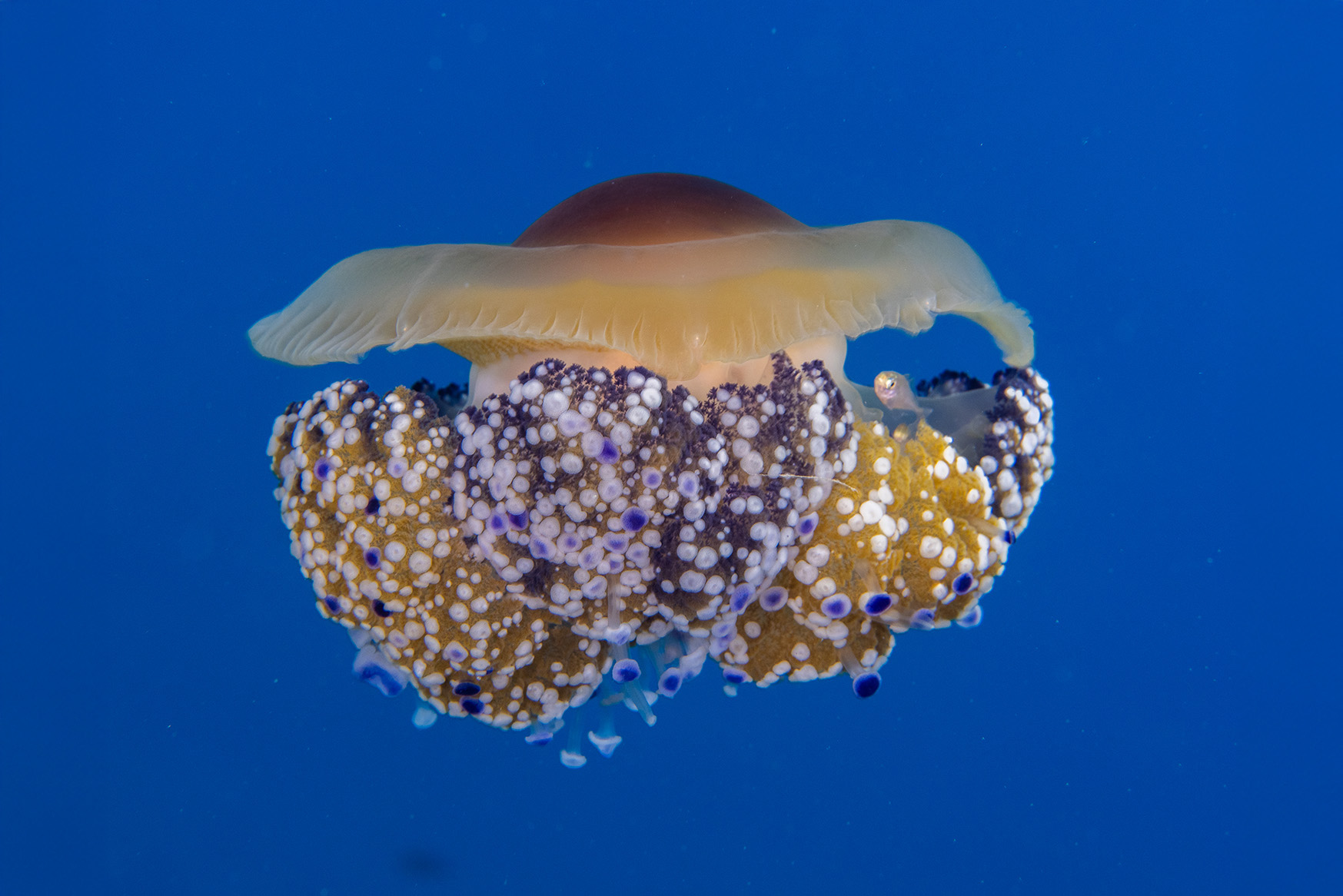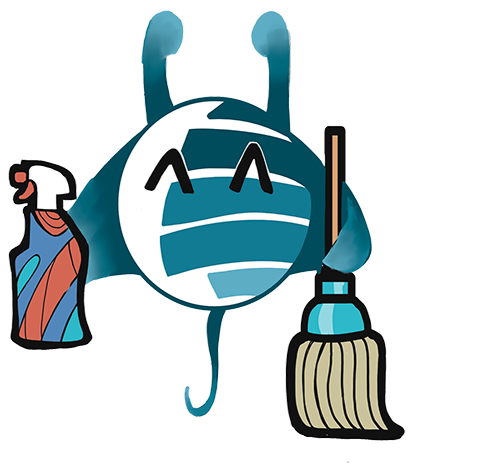A large protective umbrella and food, always and conveniently available.
It is the large jellyfish of the Mediterranean that ensure these benefits to some species of fish with which they have created a symbiotic relationship and from which they also benefit. Very different marine creatures, such as the astonishing Mediterranean Cassiopeia (Cotylorhiza tuberculata) and the horse mackerel (Trachurus trachurus), protagonists of one of the most characteristic examples of symbiosis offered by our sea. The jellyfish with the fascinating mythological name has a decidedly strange appearance and is so characteristic that it is unmistakable: observed from above, the umbrella appears like a large fried egg, with a bright yellow swelling surrounded by a white disk and is in fact also known as the "fried egg jellyfish".
The jellyfish with the fascinating mythological name has a decidedly strange appearance and is so characteristic that it is unmistakable: observed from above, the umbrella appears like a large fried egg, with a bright yellow swelling surrounded by a white disk and is in fact also known as the "fried egg jellyfish".
The edge of the umbrella can take on a greenish color, indicative of the presence of tiny zooxanthellae algae, with which it also maintains a symbiotic relationship, like many other marine animals. Under the umbrella, which can reach thirty centimeters in diameter, like its other sisters belonging to the order of Rhizostomeae, it has arms with numerous ramifications in which the oral orifices through which it feeds are located. The arms, which end with small blue/purple buttons, are therefore not tentacles as in other species of jellyfish and, in the case of Cassiopeia, they do not have stinging cells, so they are also harmless to humans.
Among those filaments, small schools of young horse mackerel find a safe refuge from predators, which also take advantage of the protective jellyfish to easily stock up on food. The jellyfish, in turn, uses the small fish that follow to get rid of parasites and unwelcome guests.
The horse mackerel or suro belongs to the Carangidae family, therefore it is a pelagic bony fish, also present in the Mediterranean, as well as in the Atlantic Ocean and the North Sea. It lives mainly at great depths, up to a thousand meters, but it can also be found at lower depths, closer to the coast, in shady areas. The schools face seasonal migrations to find constant temperatures. The single specimen has an average length of about thirty centimeters, an iridescent green color, silver sides with a black spot on the operculum and one on the pectoral axil with gray dorsal fins, whitish anal and ventral fins, gray-green pectoral and ventral fins.
The symbiosis of juvenile horse mackerel, which are immune to the stinging liquid of jellyfish, does not only concern Cassiopeia, but also the other large jellyfish of the Mediterranean, the sea lung (Rhizostoma pulmo). The same is true for the juveniles of another carangid, the amberjack (Seriola dumerili), and fish of the Sparidae family such as salema (Sarpa salpa) and bogue (Boops boops).



